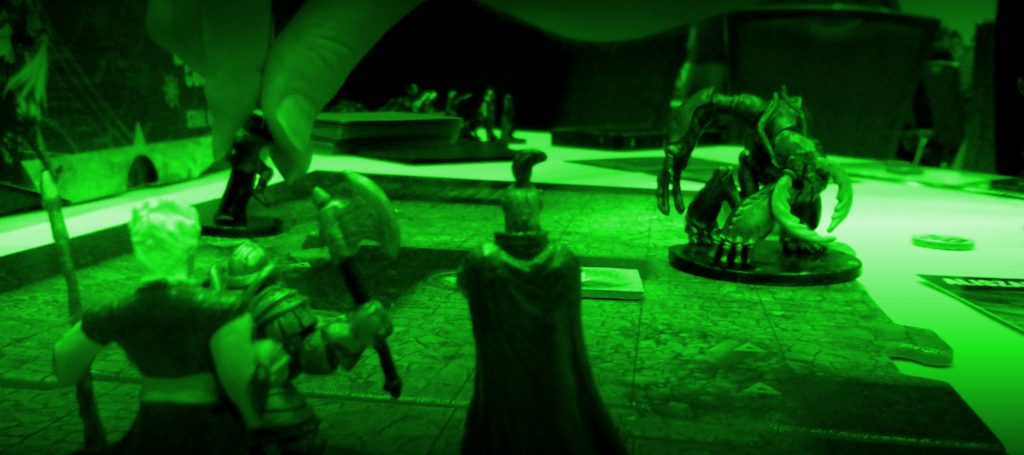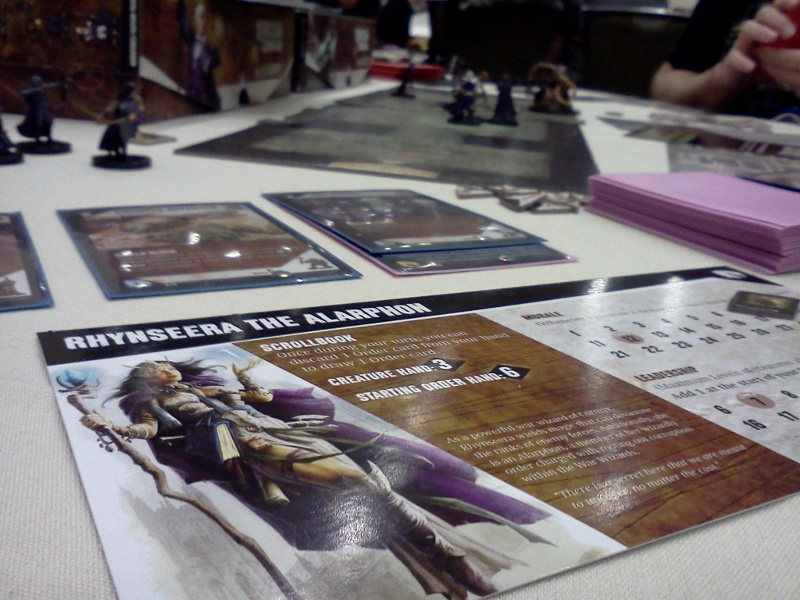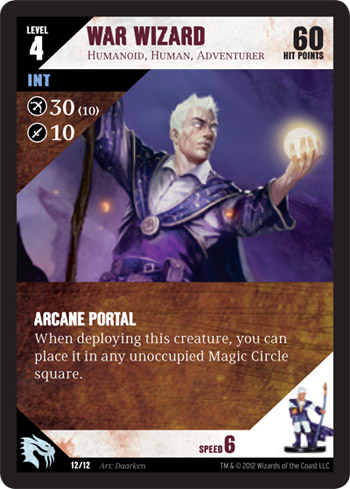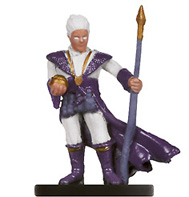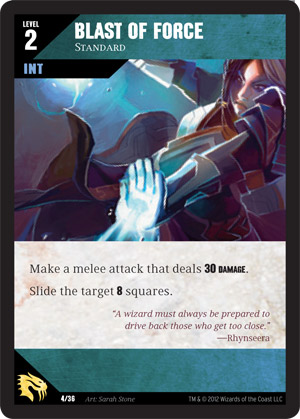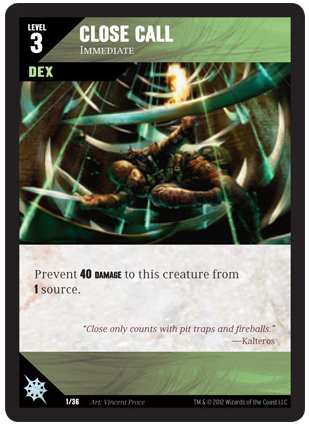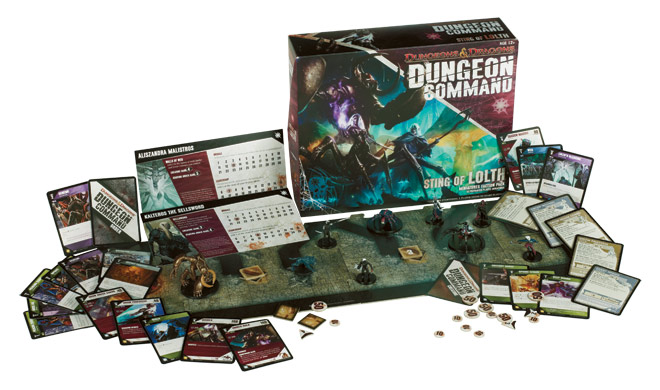Dungeon Command at PAX 2012
I didn’t play as many board games this year at PAX when compared to previous years; the expo floor exuded a surprising gravity. The one board game I did get my mitts on was Dungeon Command from Wizards of the Coast. With all the trappings of a D&D game, Dungeon Command pits two players armed with their own separately purchased warbands (complete with minis and cards) and has them duke it out for some sort of dungeon supremacy over the course of an hour. Is this game a fun stand-alone board game, or is this a way to price twelve pre-painted miniatures for $39.99?
Dungeon Rumble
It didn’t take Charles and I long to learn the rules. You create a map by interlocking puzzle-piece dungeon tiles, each army comes with its own set of cards and minis to act as the appropriate units. You pick a unique commander, draw your hand of Order cards, Creature cards, deploy your initial troops, and jump right in. With the pieces already on the table, the game took about 2 minutes to understand.
Each commander gives their player has two statistics: Leadership that measures the number of troops you can control, and Morale that acts as your team’s hit points, when it hits zero you lose, and when a Creature you control dies it goes down according to how powerful it was. The action on the table is fast paced and deadly. When you deploy a Creature card, you place it in front of you and place the Creature’s mini on the edge of the map. Dungeon Command uses 4E parlance to describe what Creatures can do: each Creature gets a “Standard Action” to attack with, a “Move Action” to move with, and any number of “Minor Actions”. For example, the War Wizard below can take 60 hit points worth of punishment, can use Standard actions to shoot 10 squares for 30 damage or bludgeon someone for 10 damage, moves 6 squares with a Move Action, and can be deployed to a special place on the map instead of the edge of the map closest to you.
While that would make an acceptably compelling game in and of itself, things get interesting when you fold in Orders. As the “instants and sorceries” of Dungeon Command, you can have your units make special attacks and dodge incoming blows with Order cards. To have a unit take an Order, they must have at least one matching statistic on the Order and meet or exceed the Order’s level. For example, during the War Wizard’s activation you could play the Blast of Force card shown below using his Standard Action. This is because the War Wizard meets or exceeds the Order’s level (2) and matches the type of the Order. (Int)
However, the real fun happens when immediate actions are used. There are tons of reactive abilities that prevent damage, execute counter attacks, and generally turn your opponent’s plans on their ear. The real gem of this game: you can (generally) only take one immediate action during your turn. This means that if a Creature on your team is taking multiple attacks you can only play an immediate action to prevent one of them. If your opponent is rushing with low level monsters, is he just trying to draw out your immediate action so his high level wizard can blast your dragon with a high level Order? It’s a clever, simple layer of added choice that really deepens the game.
Of Plastic and Dollars
Dungeon Command itself is very well designed. The minis are the same pre-painted plastic minis that we’re used to after years of playing D&D. The art ranges from average to excellent, the dungeon tiles are hardy, and the cards seemed to hold up to punishment, though the demo had sleeves on them. I didn’t get a chance to do more than flip through the rule book, but it seemed reasonably written and well laid out. Make no mistake, Wizards didn’t skimp on the production values, they want to sell you a premium product.
But the real question is whether or not this product deserves the premium price tag? Each player requires their own army (of which there are only two at the moment) to play, and each box is $39.99. While the components in the box are high quality, I can’t help but think that the game Charles and I played wasn’t worth $80. Given the fact that Wizards discontinued their D&D Minis line (which had its own built in skirmish game) this seems like a high price for the product. I will admit, the fact that the minis have cards for the Adventure System board games is a nice value, but I’m not in that market.
An Acceptable Side Quest
My bottom line: I had a ton of fun playing the Dungeon Commander demo, but I wasn’t convinced to purchase it for the price. The game nailed that tricky balance between simplicity with depth of choice, and having a mini for every unit is extremely fun. But when compared to other board game purchases at the same price point, such as Descent: Journeys in the Dark Second Edition ($80) or Twilight Imperium ($100) or Warrior Knights ($65) , the game lacks substance.
Which is a shame! This is a well crafted skirmish game that given a different model, perhaps smaller more affordable “booster packs” of minis like the original D&D line, could have been tons of fun.
*Pictures taken from the Wizards of the Coast website.

